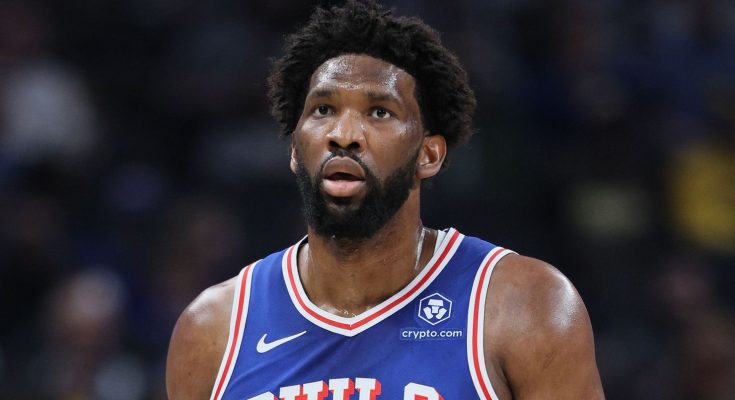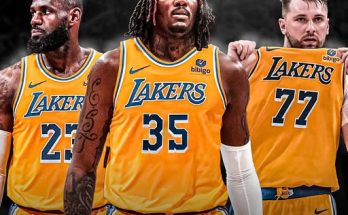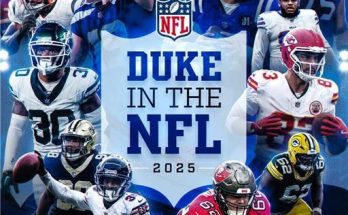In the dynamic and often unforgiving realm of professional sports, where the aspirations of greatness clash with the brutal realities of the human body, few stories resonate with as much poignant truth as that of Joel Embiid. The towering Philadelphia 76ers’ center, a reigning MVP and undeniable force of nature on the basketball court, found himself once again at a familiar, disheartening crossroads in the 2024-2025 NBA season. Officially, and agonizingly, ruled out for the remainder of that season due to persistent and debilitating issues with his left knee, Embiid’s absence cast a long, somber shadow over a franchise that had, for so long, placed its championship hopes squarely on his broad shoulders. This was not merely an injury; it was a continuation of a narrative that has defined much of his remarkable yet often interrupted career, a testament to his unparalleled talent juxtaposed with the fragility that stalks even the most elite athletes.
The announcement came like a gut punch to the fervent Philadelphia faithful, around late February and early March of 2025. It was a stark confirmation of what many had grimly anticipated as Embiid’s sporadic appearances and visibly diminished effectiveness throughout the season had painted an increasingly concerning picture. His left knee, the same joint that had undergone meniscus surgery in February 2024, had continued to plague him with swelling and discomfort, rendering him medically unable to sustain the rigors of an NBA season. Despite initial hopes that the issues might resolve with rest and conservative treatment, a deeper evaluation by multiple medical specialists ultimately determined that focused treatment and rehabilitation were the only viable path forward, effectively ending his 2024-2025 campaign after a mere 19 games. This was a season that had begun with cautious optimism, amplified by the significant acquisition of veteran forward Paul George on a four-year max contract, a move intended to elevate the 76ers into bona fide championship contention alongside Embiid and rising star Tyrese Maxey. Instead, the team found itself limping to a disappointing 20-38 record when the announcement was made, plummeting to 12th in the Eastern Conference and teetering on the brink of missing the playoffs entirely for the first time since 2017. George, too, seemed to struggle to find his footing, experiencing his worst scoring season in over a decade, a collective reflection of the pervasive disarray that Embiid’s absence inevitably created. The dream of a triumphant season had, once again, dissolved into the painful reality of a star sidelined.
To truly comprehend the weight of this ruling, one must journey through the labyrinthine corridors of Joel Embiid’s medical history, a saga that began even before his professional career truly took flight. Drafted third overall by the 76ers in 2014, Embiid missed his entire first two seasons due to a stress fracture in his right foot, an injury that immediately branded him with the dreaded “injury-prone” label. This early setback, though frustrating, served as a prelude to a career punctuated by a series of ailments that would consistently test his resolve and the patience of the organization. From meniscus tears in his left knee (a recurring theme) and a torn meniscus in his right knee, to bone bruises, shoulder sprains, and even an orbital bone fracture requiring a protective mask, Embiid’s body has seemingly been a constant battlefield. The 2023-2024 season, preceding this latest setback, was already a curtailed affair, with the MVP appearing in just 39 games due to the very meniscus tear that necessitated surgery in February 2024. He famously rushed back for the playoffs, visibly compromised and far from his dominant self, a decision that, in hindsight, perhaps exacerbated the underlying issues that led to his latest prolonged absence.
The inherent paradox of Embiid’s career lies in the undeniable fact that when healthy, he is undeniably one of the most dominant forces in modern basketball, a truly generational talent capable of single-handedly altering the complexion of a game. His rare blend of size, skill, and athleticism allows him to command both ends of the floor, a prolific scorer who can post up, shoot from deep, and effortlessly draw fouls, while also anchoring an elite defense with his shot-blocking and rebounding prowess. His 2022-2023 MVP season was a testament to this, a period where he showcased his full capabilities over a sustained period, leading the league in scoring and carrying the 76ers to a formidable record. Yet, the subsequent seasons, particularly 2024-2025, served as a cruel reminder of the precarious balance he must strike between pushing his body to its limits and succumbing to its inherent fragilities. The statistics from his truncated 2024-2025 season, though still impressive by conventional standards (23.8 points, 8.2 rebounds, and 4.5 assists per game), were a clear step down from his MVP-caliber production, with a noticeable dip in his shooting percentage. This wasn’t merely a statistical decline; it was a visual representation of a player battling through immense pain, his movements often labored, his explosiveness muted.
The broader implications of Embiid’s persistent injury struggles extend beyond the immediate fortunes of the Philadelphia 76ers and touch upon a critical discussion point within the modern NBA: the long-term health and workload management of its biggest stars, particularly those who operate in the low post and endure significant physical contact. The sheer demands of an 82-game regular season, coupled with the intensity of playoff basketball, place an extraordinary strain on athletes, particularly those with a history of injuries. For a player of Embiid’s size and playing style, the impact on his knees, feet, and back is compounded, making him susceptible to recurring issues. The concept of “load management,” once a controversial topic, has become an increasingly accepted, if not entirely embraced, strategy for preserving star players. Teams are now more acutely aware of the need to prioritize long-term health over short-term gains, even if it means resting players for crucial games. However, as Embiid’s situation underscores, even with careful management, the human body has its limits, and chronic issues can persist, derailing even the most meticulously crafted plans. The dialogue surrounding Embiid’s future now inevitably revolves around not just if he can return, but if he can ever truly sustain an MVP-level workload without succumbing to further setbacks. This is a question that haunts not just the 76ers, but also impacts the league’s competitive landscape, as the consistent availability of its marquee players is crucial for the overall spectacle and integrity of the game.
Beyond the physical ailments, there is the often-unseen emotional and psychological toll that such recurring injuries inflict on an athlete of Embiid’s caliber. The recent revelations from former teammate Nicolas Batum provided a stark and poignant glimpse into the immense suffering Embiid privately endured during the 2024-2025 season. Batum’s candid account, in which he described seeing Embiid’s knee before and after every game and expressed utter disbelief that he could even walk, painted a harrowing picture of unseen pain and a systemic breakdown within his body. It wasn’t just the knee; Embiid was battling blurry vision, debilitating headaches, and chronic insomnia due to his left eye failing to close properly at night. A team therapist reportedly observed, “It’s his knee, it’s his eye, it’s his whole system,” underscoring how his body was struggling on multiple fronts. Embiid, known for his stoicism and often playful demeanor, rarely spoke about the true extent of his suffering, masking ongoing grief, sleep deprivation, and moments where he grappled with the very notion of continuing to play. This human element, the silent struggle behind the bright lights and roaring crowds, adds another layer of complexity to his story, transforming him from merely a basketball player into a symbol of resilience in the face of relentless adversity. The mental fortitude required to continually rebound from such physical setbacks, to push past pain and disappointment, is a testament to his unwavering dedication to the game and his desire to compete at the highest level. The journey to recovery is not just about healing the physical wounds but also about rebuilding the psychological armor that allows athletes to endure the relentless pressure and scrutiny that comes with their profession.
Looking ahead, as of mid-July 2025, there is a cautious glimmer of optimism emanating from the 76ers organization regarding Joel Embiid’s recovery for the upcoming 2025-2026 NBA season. Following his arthroscopic left knee surgery in April, team president Daryl Morey has provided encouraging updates, stating that Embiid is “on track” to be healthy for training camp in September. Reports indicate that he has resumed partial basketball activities, a significant milestone in his rehabilitation, though he has yet to return to full on-court activities. This gradual and deliberate approach to his recovery is a stark contrast to previous instances where he might have rushed back, highlighting a renewed focus on his long-term health and sustainability. The hope within the organization is that with a complete and unhurried rehabilitation period, Embiid can return to his MVP form and lead the 76ers, now bolstered by the presence of Paul George and Tyrese Maxey, back into championship contention. The narrative of Joel Embiid’s career, once defined by the exasperating cycle of injury and return, is now poised at a critical juncture. His journey is no longer solely about individual accolades or statistical dominance, but about the profound resilience he has demonstrated in the face of relentless physical and emotional challenges. The unwavering belief in his potential, despite the recurring setbacks, speaks volumes about his extraordinary talent and the impact he has on the game. The Philadelphia 76ers, and indeed the entire NBA, will be watching closely as Joel Embiid embarks on this crucial phase of his career, hoping that the lessons learned from past injuries will pave the way for a more enduring and ultimately triumphant future. The saga of Joel Embiid is a compelling reminder that the path to greatness in professional sports is rarely linear, often fraught with unforeseen obstacles, and ultimately defined by the sheer will to overcome and compete, no matter the cost. His story continues to be written, one step, one rehabilitation session, and one hopeful return at a time, a testament to the enduring power of perseverance in the face of adversity.



